Sulawesi Utara
North Sulawesi
North Sulawesi
Si Tou Timou Tumou Tou - Manusia hidup untuk menghidupi/mendidik/menjadi berkat orang lain
Humans live to support/educate/be a blessing to others
 North Sulawesi (Indonesian: Sulawesi Utara) is a province of Indonesia. It is located on the Minahasa Peninsula of Sulawesi, south of the Philippines and southeast of Sabah, Malaysia. It borders the Philippine province of Davao Occidental and Soccsksargen regions of the Philippines to the north, the Maluku Sea to the east, Gorontalo and Celebes Sea to the west and the Gulf of Tomini to the southwest. With Miangas, it is the northernmost province of Indonesia. The province’s area is 13,892.47 square kilometres (5,363.91 sq mi), and its population was 2,270,596 according to the 2010 census; this rose to 2,621,923 at the 2020 Census, while the official estimate as at mid 2021 was 2,638,631.
North Sulawesi (Indonesian: Sulawesi Utara) is a province of Indonesia. It is located on the Minahasa Peninsula of Sulawesi, south of the Philippines and southeast of Sabah, Malaysia. It borders the Philippine province of Davao Occidental and Soccsksargen regions of the Philippines to the north, the Maluku Sea to the east, Gorontalo and Celebes Sea to the west and the Gulf of Tomini to the southwest. With Miangas, it is the northernmost province of Indonesia. The province’s area is 13,892.47 square kilometres (5,363.91 sq mi), and its population was 2,270,596 according to the 2010 census; this rose to 2,621,923 at the 2020 Census, while the official estimate as at mid 2021 was 2,638,631.
North Sulawesi in the past was an area of potential spices, rice and gold which became a battleground for the interests of economic hegemony between the Portuguese, Spanish, Dutch and the Kingdoms around this area, which ultimately led to political and military struggles. The past of this region also became the trading route between west and east and the spread of Christianity, Islam and belief or religion brought by Chinese merchants.
Following the Japanese surrender in 1945, the Dutch briefly regained possession of the area, before finally leaving for real in 1949, following the Round Table Conference, in which the Dutch recognized the newly created United States of Indonesia (RIS). Thus, North Sulawesi was incorporated into the territory of the State of East Indonesia (NIT). Because it was not in accordance with the will of the people, NIT was finally dissolved and then merged into the Republic of Indonesia. On 17 August 1950, the RIS was officially disbanded and then re-formed as the unitary state of the Republic of Indonesia. The island of Sulawesi was governed briefly as a single province, before being separated into several different provinces. Thus, the province of North Sulawesi was created on 14 August 1959. The western half of this area was separated from North Sulawesi on 5 December 2000 and established as the province of Gorontalo.
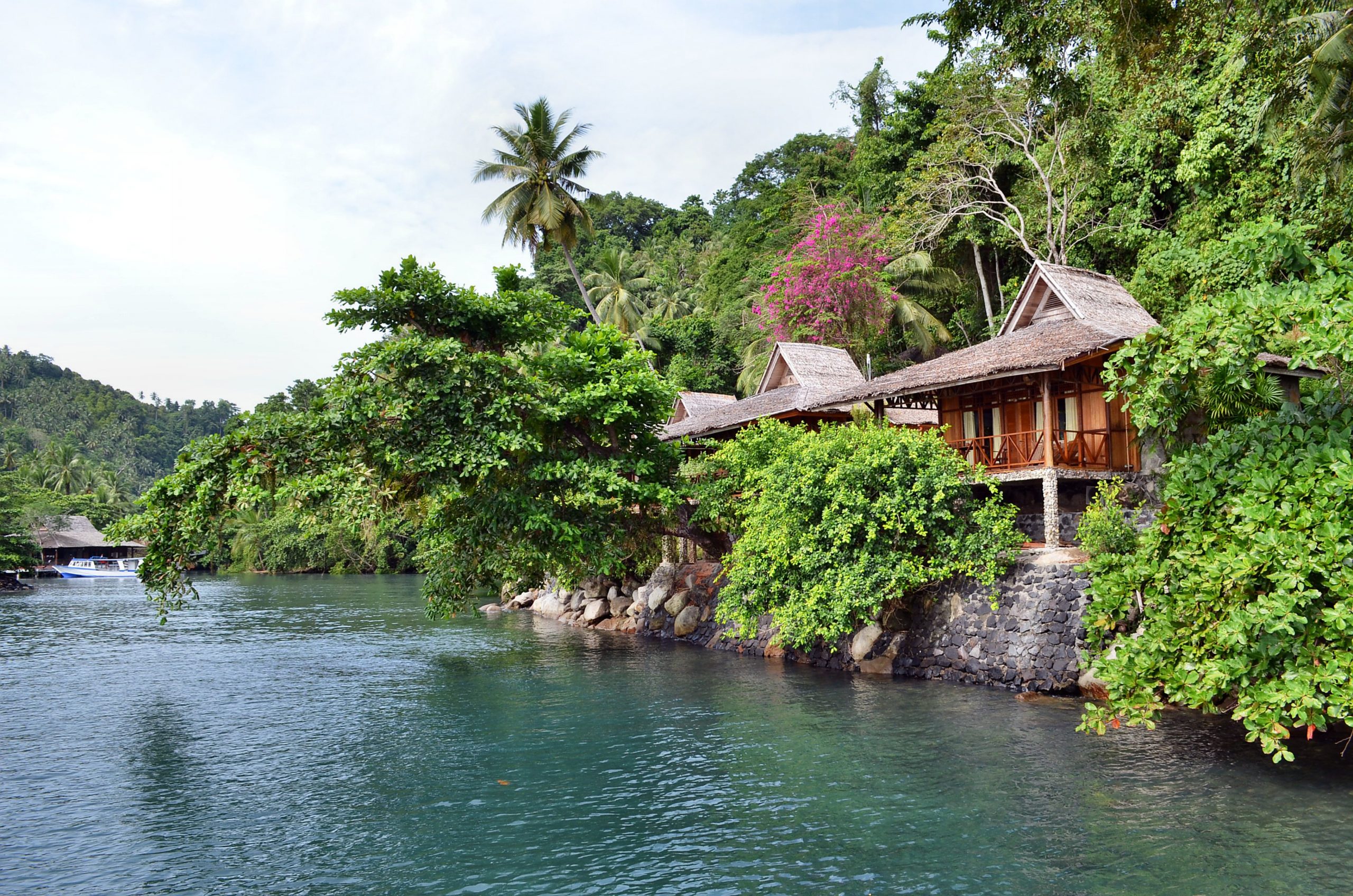 Etymology
Etymology
The area around North Sulawesi used to be called Minahasa. The name is still used sometimes to refer to the province. The word Minahasa is etymologically derived from the words Mina-Esa (Minaesa) or Maesa which means being one or uniting, meaning hope to unite various sub-ethnic groups of Minahasa consisting of Tontemboan, Tombulu, Tonsea, Tolour (Tondano), Tonsawang, Ponosakan, Pasan, And Bantik.
The word “Minahasa” itself was only used during the colonial era. “Minahasa” is generally interpreted as “having become one”. Based on several historical documents, the word “Minahasa” is firstly used by J.D. Schierstein, the Dutch regent of Manado, in his report to the Governor of Maluku on 8 October 1789. The word “Minahasa” in his report is defined as Landraad or “State Council” or “Regional Council”.
 History
History
The appointment of Sam Ratulangi as the first governor of Sulawesi then succeeded in winning Minahasan support to the Republic of Indonesia. After Indonesian independence, Indonesia is divided into 8 provinces, and Sulawesi is one of these provinces.
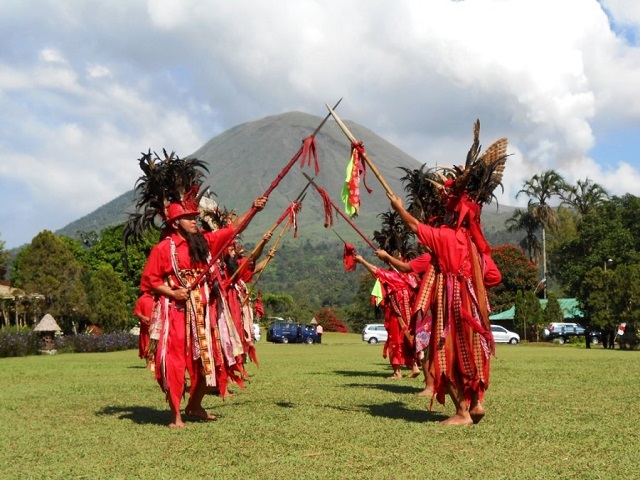 In 1946 in Sulawesi was formed the State of East Indonesia, which later became one of the states within the United States of Indonesia. The State of East Indonesia was dissolved, and merged into the Republic of Indonesia as part of a then unified Sulawesi Province.
In 1946 in Sulawesi was formed the State of East Indonesia, which later became one of the states within the United States of Indonesia. The State of East Indonesia was dissolved, and merged into the Republic of Indonesia as part of a then unified Sulawesi Province.
In 1964 the People’s Representative Council enacted Law no. 13 officially creating the province of North Sulawesi, with Manado as provincial seat. 14 August 1959 was designated as the anniversary of the province honoring the legacy of the Minahasa people’s fight for responsible government.
Since the 1998 reforms, the Indonesian government has begun to adopt laws that enhance regional autonomy.
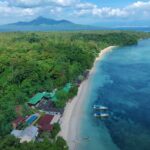

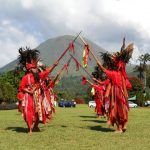



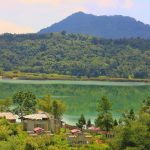
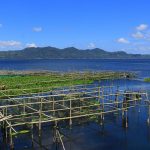
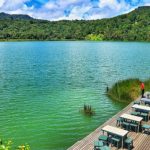
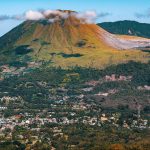












 Geography
Geography
The province of North Sulawesi is located in the northern peninsula of Sulawesi Island and is one of three provinces in Indonesia which has geoposition, geostrategy and geopolitical advantages and is located on the Pacific Rim. The other two provinces are North Sumatra and Aceh Special Region.
Viewed from geographical location, North Sulawesi is located at 0.30–4.30 North Latitude (Lu) and 121–127 East Longitude (BT). The position of the peninsula stretches from east to west with the northernmost regions are the Sangihe and Talaud Islands. The archipelago is adjacent to neighboring Philippines.
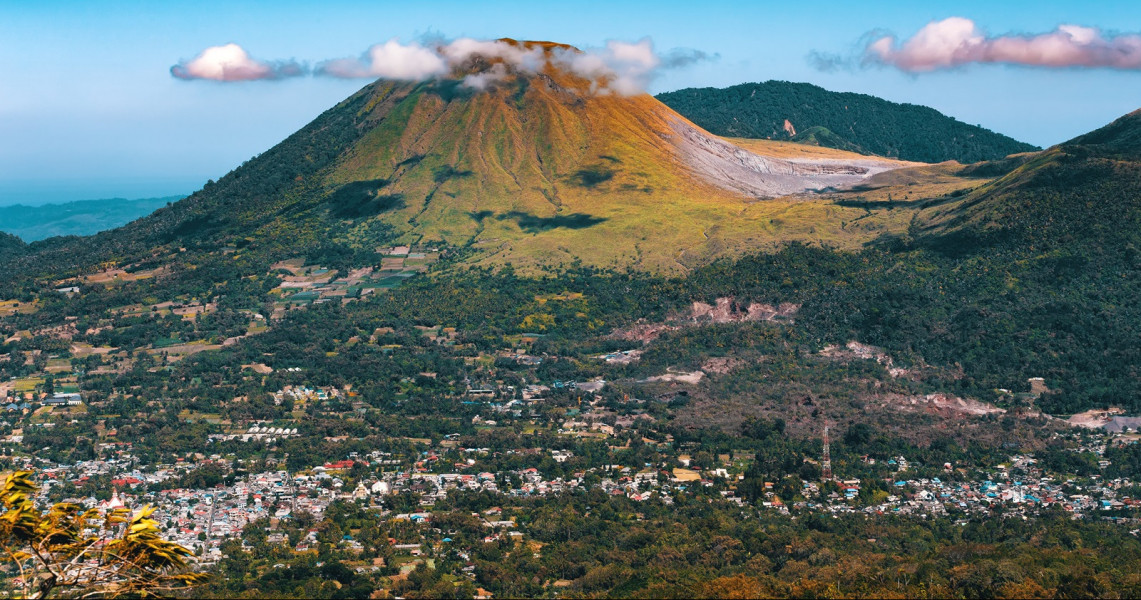 The area of North Sulawesi has boundaries: North –> Celebes Sea, Pacific Ocean and the Philippines;
South –> Gulf of Tomini;
East –> Maluku Sea, Maluku and North Maluku; and
West –> Gorontalo
The area of North Sulawesi has boundaries: North –> Celebes Sea, Pacific Ocean and the Philippines;
South –> Gulf of Tomini;
East –> Maluku Sea, Maluku and North Maluku; and
West –> Gorontalo
Most of the mainland area of North Sulawesi Province consists of mountains and hills interspersed by the valleys that make up the land. The mountains are located with a height above 1,000 m (3,300 ft) above sea level.
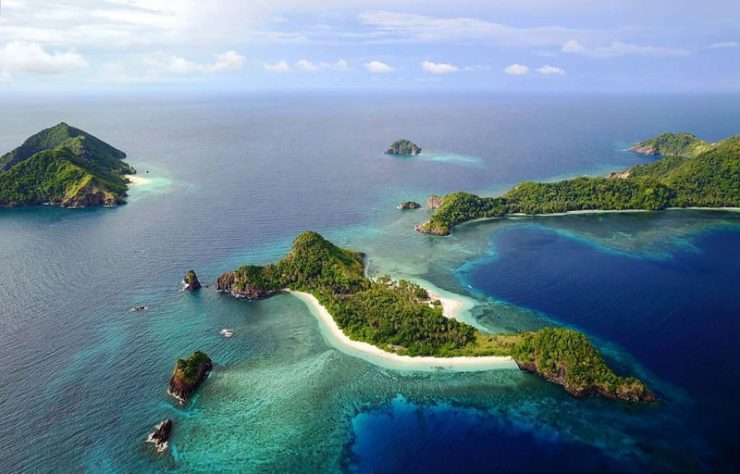 Some mountains in North Sulawesi are Mount Klabat (1,895 m or 6,217 ft) in North Minahasa, Mount Lokon (1,579 m or 5,180 ft), Mount Mahawu (1,331 m or 4,367 ft) in Tomohon, Mount Soputan (1,789 m or 5,869 ft) in Southeast Minahasa, Mount Dua Saudara (1,468 m or 4,816 ft) in Bitung, Mount Awu (1,784 m or 5,853 ft), Mount Space (1,245 m or 4,085 ft), Mount Karangketang (1,320 m or 4,330 ft), Mount Dalage (1,165 m or 3,822 ft), in Sangihe and Talaud, Mount Ambang (1,689 m or 5,541 ft), Mount Gambula (1,954 m or 6,411 ft) and Mount Batu Balawan (1,970 m or 6,460 ft).
Some mountains in North Sulawesi are Mount Klabat (1,895 m or 6,217 ft) in North Minahasa, Mount Lokon (1,579 m or 5,180 ft), Mount Mahawu (1,331 m or 4,367 ft) in Tomohon, Mount Soputan (1,789 m or 5,869 ft) in Southeast Minahasa, Mount Dua Saudara (1,468 m or 4,816 ft) in Bitung, Mount Awu (1,784 m or 5,853 ft), Mount Space (1,245 m or 4,085 ft), Mount Karangketang (1,320 m or 4,330 ft), Mount Dalage (1,165 m or 3,822 ft), in Sangihe and Talaud, Mount Ambang (1,689 m or 5,541 ft), Mount Gambula (1,954 m or 6,411 ft) and Mount Batu Balawan (1,970 m or 6,460 ft).
 The lakes in this area potentially have economic value for the development of the field of tourism, irrigation and energy. The lakes are Lake Tondano with an area of 4,278 ha (10,570 acres) in Minahasa, Lake Moat covering 617 ha (1,520 acres) in East Bolaang Mongondow.
The lakes in this area potentially have economic value for the development of the field of tourism, irrigation and energy. The lakes are Lake Tondano with an area of 4,278 ha (10,570 acres) in Minahasa, Lake Moat covering 617 ha (1,520 acres) in East Bolaang Mongondow.
In general, rivers are used for various purposes, among others, for irrigation as well as a source of electricity and drinking water sources. The rivers are Tondano River (40 km or 25 mi), Poigar River (54.2 km or 33.7 mi), Ranoyapo River (51.9 km or 32.2 mi), Talawaan River (34.8 km or 21.6 mi) in Minahasa.
Other major rivers are located in Bolmong and Bolmut namely Dumoga River (87.2 km or 54.2 mi), Sangkub River (53.6 km or 33.3 mi), Ongkaw River (42.1 km or 26.2 mi). .
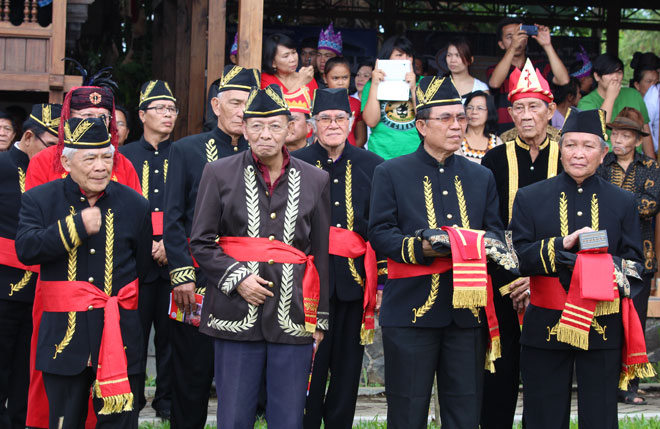 Demographics
Demographics
In 2010, about 68% were Christian (predominantly Protestant with a sizable Catholic minority), one of the few exceptions in the predominantly Muslim Indonesia, due to the prominent Dutch missionary activity during the colonial era. Also, because the Muslim-majority region of Gorontalo (then comprising a city and two regencies) was split off to form a new province in 2000.
There are also Muslim, Hindu, and Buddhist minorities. The largest ethnic groups are the Minahasan in the north of the province and the Mongondow to the south. The province’s chief city is Manado with a population of 453,182 people according to the mid 2021 official estimate.
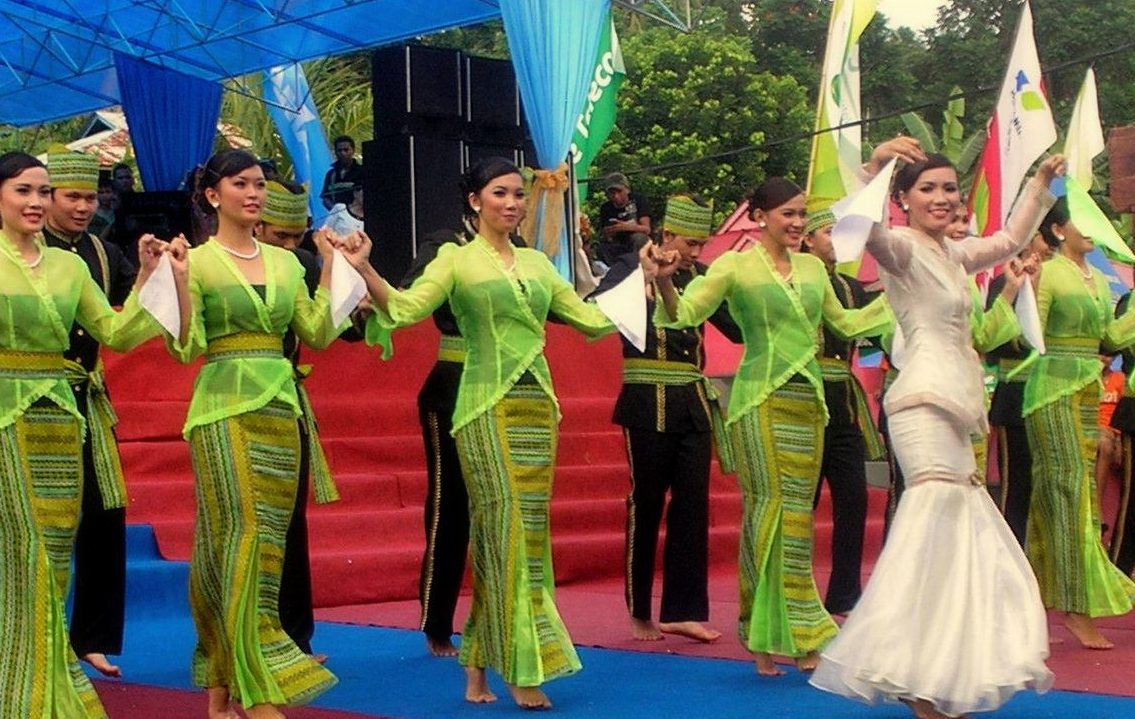 Most of the people of North Sulawesi adhere to Christianity, the next is Islam and then Hinduism. Christianity is the majority religion in those districts and cities of the Islands and Minahasa, while Islam is the majority religion in the districts and cities in the Bolaang Mongondow.
Most of the people of North Sulawesi adhere to Christianity, the next is Islam and then Hinduism. Christianity is the majority religion in those districts and cities of the Islands and Minahasa, while Islam is the majority religion in the districts and cities in the Bolaang Mongondow.
Most of the Christians in North Sulawesi adhere to Protestantism, while significant Roman Catholicism communities also exist in Manado and Bitung. Chinese folk religions such as Confucianism and Taoism also exist, which is mostly concentrated in Manado, which has a significant Chinese population.
Manado also has a significant Judaism community. Currently, the only synagogue in Indonesia is located in Manado. There are an estimated 800 people in Manado who adhere to Judaism. As the Indonesian government only recognizes six religions, those who adhere to Judaism can only put the officially unsanctioned religion on their ID cards.
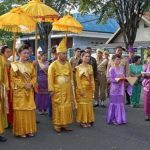


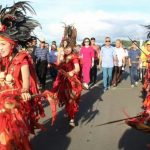
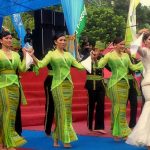
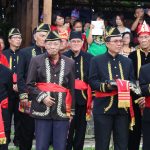













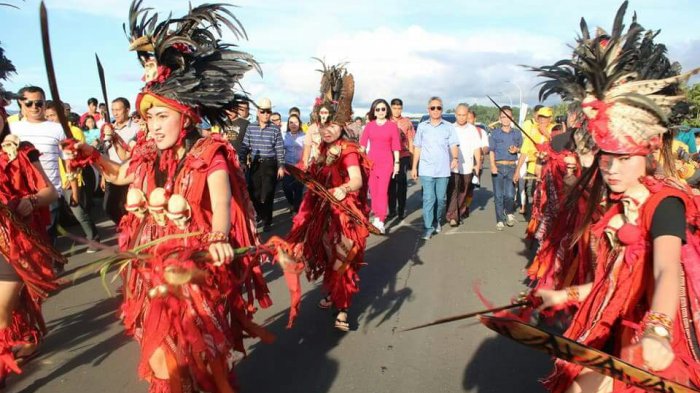 The Minahasan is the dominant ethnic group in the province. They are the most populous ethnic group in the Minahasa Peninsula. They mostly lived in areas covering Bitung City, Manado City, Tomohon City, Minahasa Regency, North Minahasa Regency, South Minahasa Regency and Southeast Minahasa Regency.
The Minahasan is the dominant ethnic group in the province. They are the most populous ethnic group in the Minahasa Peninsula. They mostly lived in areas covering Bitung City, Manado City, Tomohon City, Minahasa Regency, North Minahasa Regency, South Minahasa Regency and Southeast Minahasa Regency.
Other ethnic groups are the Bolaang Mongondow, Sangihe, Talaud and Siau. Ethnicity in North Sulawesi is more heterogeneous then other parts of Indonesia. The Minahasan and Bolaang Mongondow are spread almost throughout the region of North Sulawesi mainland.
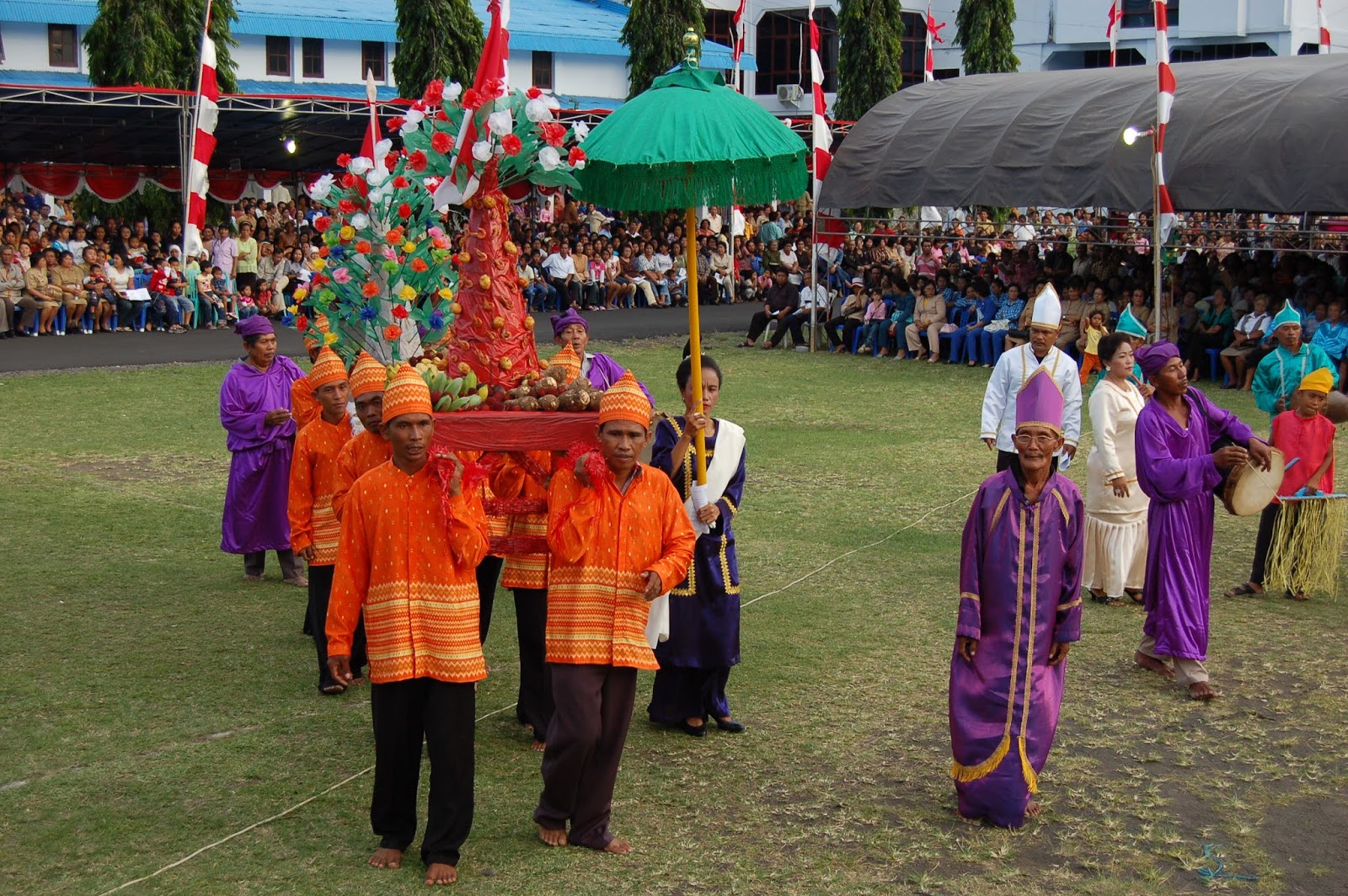 The Sangihe, Talaud and Siau mostly inhabit the Sangihe Islands, Talaud Island, and Lembeh Island, especially in coastal areas north, east and west of mainland North Sulawesi. The Bajau people are seafaring nomads who has migrated from the Sulu Archipelago in the Philippines. They inhabits several coastal villages of North Sulawesi in the northern part of North Minahasa Regency.
The Sangihe, Talaud and Siau mostly inhabit the Sangihe Islands, Talaud Island, and Lembeh Island, especially in coastal areas north, east and west of mainland North Sulawesi. The Bajau people are seafaring nomads who has migrated from the Sulu Archipelago in the Philippines. They inhabits several coastal villages of North Sulawesi in the northern part of North Minahasa Regency.
In addition to the natives, North Sulawesi is also home to migrants. There are a significant Chinese population in North Sulawesi, especially around the city of Manado. The Chinese are also one of the first people to have contact with the local people before the European came.
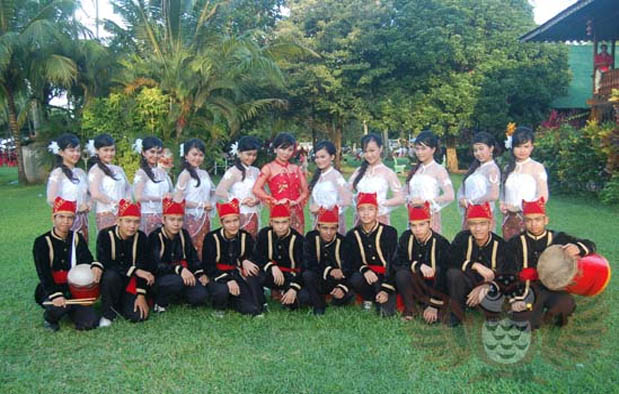 Other ethnic groups such as the Javanese and the Sundanese also exist. They are mostly migrated from where they come from due to the Transmigration program enacted by the Dutch during the colonial era until the Suharto era. They generally live in urban areas, such as Manado and Bitung.
Other ethnic groups such as the Javanese and the Sundanese also exist. They are mostly migrated from where they come from due to the Transmigration program enacted by the Dutch during the colonial era until the Suharto era. They generally live in urban areas, such as Manado and Bitung.
Indonesian is the official language of the province, as well as other parts of Indonesia. Official documents released by the provincial government as well as road signs are all written in Indonesia. However, Manado Malay is the lingua franca of the province. This language resembles Indonesian but with a distinct accent and dialect. Some of the vocabulary are derived from Dutch, Portuguese and other foreign languages. Manado Malay are often used for day-to-day communication between different ethnic groups.
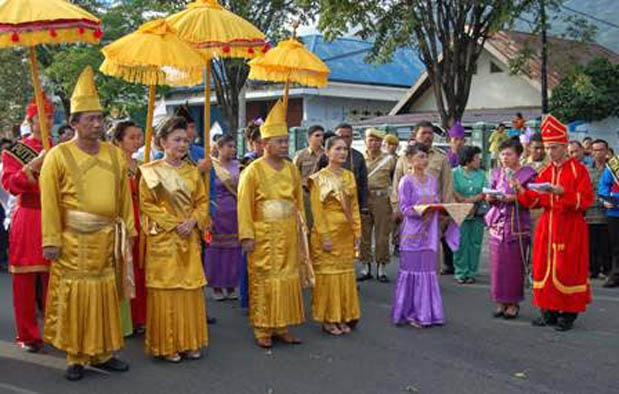 Minahasan languages are spoken by the Minahasan people. They are spread around the central and northern part of the province. In the Minahasa, 5 distinct languages are spoken: Tonsawang, Tontemboan, Toulour, Tonsea and Tombulu. To the south, the Mongondow language and the Gorontalo language are spoken. In the islands to the north which borders the Philippines, the Visayan languages are used by the local people.
Minahasan languages are spoken by the Minahasan people. They are spread around the central and northern part of the province. In the Minahasa, 5 distinct languages are spoken: Tonsawang, Tontemboan, Toulour, Tonsea and Tombulu. To the south, the Mongondow language and the Gorontalo language are spoken. In the islands to the north which borders the Philippines, the Visayan languages are used by the local people.
Other languages spoken are Javanese, Sundanese and Balinese. They are mostly spoken by migrants coming from other parts of Indonesia. As Manado, has a significant Chinese population, Hakka is also spoken by some Chinese people. Some other Chinese dialect are also spoken, such as Hokkien and Cantonese.
English and Mandarin are widely understood in areas where there is a large tourism industry, such as the Bunaken National Park. Older generations tend to understand Dutch and Portuguese. People who lived in islands near the borders of the Philippines may understand Tagalog.
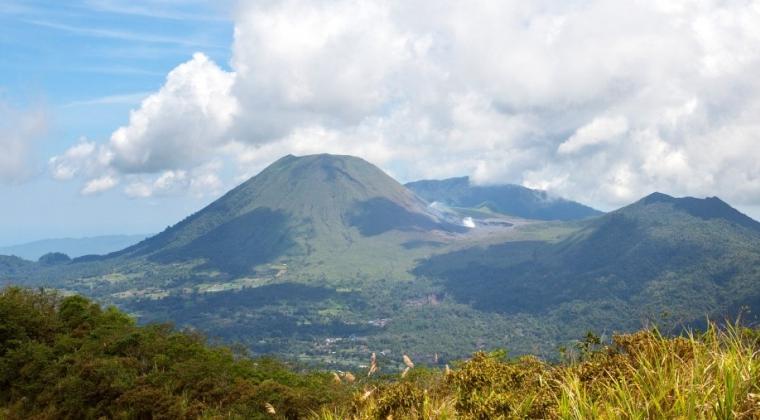 Climate
Climate
Climate areas of North Sulawesi include tropical ones affected by muzon winds. In the months of November to April the West winds bring rain on the north coast, whereas in May to October a dry south wind changes. Uneven rainfall with annual rates ranging from 2,000 to 3,000 mm (79 to 118 in), and the number of rainy days between 90 and 139 days.
Temperatures are at every level up to the height of the cool as the city area Tomohon, Langowan in Minahasa Regency, Modoinding in Minahasa Selatan Regency, Kotamobagu city, and Modayag and Pasi in Bolaang Mongondow Regency. The area that receives the most rainfall is the Minahasa area.
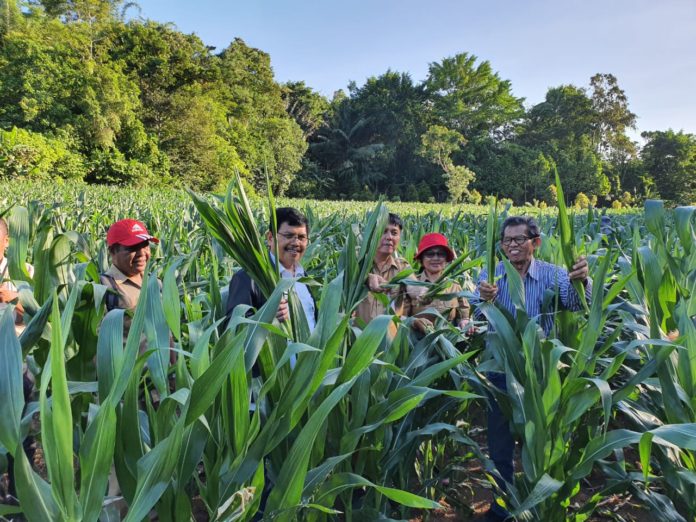 Temperatures average 25 °C (77 °F). The average maximum air temperature was recorded at 30 °C (86 °F) and the minimum average air temperature was 22.1 °C (71.8 °F).
Temperatures average 25 °C (77 °F). The average maximum air temperature was recorded at 30 °C (86 °F) and the minimum average air temperature was 22.1 °C (71.8 °F).
The air humidity was 73.4%. However, the temperature is also affected by the altitude of the place above sea level. The higher the location, the lower the temperature also, with the calculation of every 100-metre (330 ft) increase can lower the temperature by around 0.6 °C (1.1 °F).
 Flora and Fauna
Flora and Fauna
In general, the varieties of flora and fauna in North Sulawesi are similar to those in other parts of Indonesia, except for some animals not found in other areas such as Deer, Maleo, Taong, Mini Tarsius Spectrum in Bitung City Nature Reserve And Coelacanth off the coast of Manado. This area there are no wild animals except the type of snake and crocodile that there are not many.
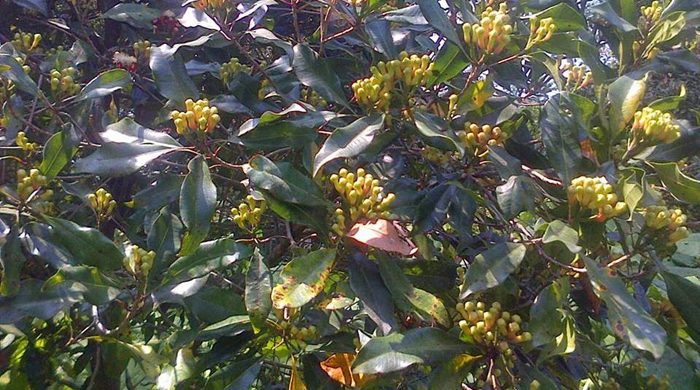 In the sea off North Sulawesi, there are several species of fish, coral, and plankton. Several types of famous marine fish and is one source of foreign exchange, among others: tuna, skipjack, yellow tail, lobsters, and others. The condition of flora can be said that the mainland of North Sulawesi partly dominated by forest.
In the sea off North Sulawesi, there are several species of fish, coral, and plankton. Several types of famous marine fish and is one source of foreign exchange, among others: tuna, skipjack, yellow tail, lobsters, and others. The condition of flora can be said that the mainland of North Sulawesi partly dominated by forest.
Forest cover ranges from 300 metres (980 ft) from sea level to mountain tops with various types of good quality timber, including ebony (wooden) iron wood, linggua wood, cempaka wood, wooden nantu, gopasa wood, meranti wood, There are also rattan, and various types of Dammar. In addition, there are many plantation crops such as coconut, nutmeg, and cloves.
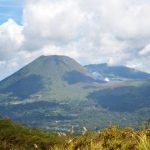

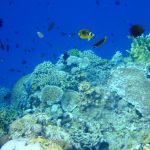
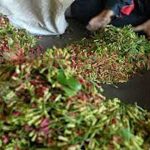

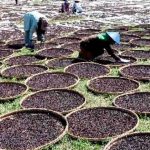












Kabupaten & Kota
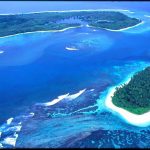
Kepulauan Sitaro

Kepulauan Sangihe
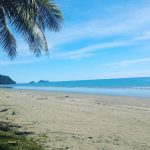
Bolaang Mongondow

Bolaang Mongondow Utara

Bolaang Mongondow Selatan
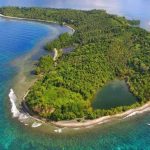
Bolaang Mongondow Timur
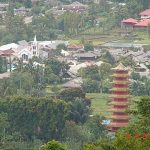
Tomohon
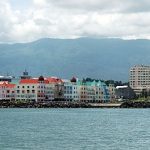
Manado
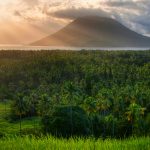
Kotamobagu
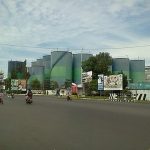
Bitung
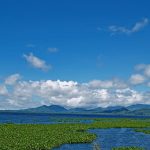
Minahasa
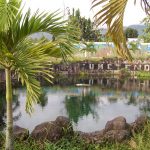
Minahasa Utara

Minahasa Tenggara
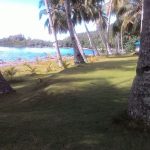
Minahasa Selatan

Kepulauan Talaud

Kepulauan Sitaro

Kepulauan Sangihe

Bolaang Mongondow

Bolaang Mongondow Utara

Bolaang Mongondow Selatan

Bolaang Mongondow Timur

Tomohon

Manado

Kotamobagu

Bitung

Minahasa

Minahasa Utara
